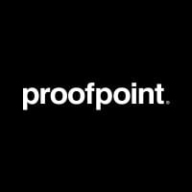

Proofpoint Email Protection and Sophos Phish Threat compete in the email security category. Proofpoint appears to have more comprehensive security features, while Sophos has a strong focus on user education and reliability.
Features: Proofpoint Email Protection offers advanced phishing and spam protection, business email compromise defense, and a robust filtering system. Its capacity to handle complex attachments and provide detailed threat intelligence makes it notable. Sophos Phish Threat is distinguished by its focus on user education, offering training on identifying phishing attempts. It enhances user security awareness, combining a simple interface with effective training tools.
Room for Improvement: Proofpoint could improve by enhancing integration capabilities with complex environments, refining its search functions, and optimizing the user interface. It needs better pricing strategies and enhanced detection of emails with non-malicious links. Sophos Phish Threat could be improved by supporting more languages in training materials, simulating modern phishing scenarios, and advancing AI-based detection. Users also want better integration with other security systems and more detailed reporting features.
Ease of Deployment and Customer Service: Proofpoint provides a range of deployment options including public, private, hybrid, and on-premises cloud configurations, giving organizations flexibility. Though its technical support is generally well-regarded, improvements in response speed and local assistance are suggested. Sophos Phish Threat, favoring public and on-premises cloud setups, is seen as easy to deploy. Its support is responsive but could benefit from improved staffing and technical knowledge.
Pricing and ROI: Proofpoint Email Protection is perceived as costly but its extensive protection features offer a justified return on investment, particularly in preventing expensive attacks like ransomware. Sophos Phish Threat is considered more affordable, providing cost-effective training and security solutions, though some users find its pricing slightly high compared to other training options. Overall, Proofpoint is seen as a premium offering, while Sophos strikes a balance between cost and functionality.


Proofpoint Email Protection enhances email security by blocking phishing, malware, and spam threats. It serves as a firewall for inbound and outbound emails, featuring encryption, data loss prevention, and machine learning capabilities.
Businesses use Proofpoint Email Protection for its advanced anti-phishing tools, threat protection, sandboxing, and spam filtering, significantly improving email security infrastructure. It offers strong AI and algorithms, user-friendly dashboards, and efficient quarantine and analysis tools. Integration with Office 365, flexible blacklist/whitelist options, and robust malware protection are key strengths. While it provides scalability, reliability, and cost-effectiveness, areas for improvement include better integration with complex environments, enhanced search functionality, and more intuitive smart search.
What are the important features of Proofpoint Email Protection?
What benefits do businesses gain from Proofpoint Email Protection?
Industries such as healthcare, finance, and retail implement Proofpoint Email Protection to safeguard sensitive information and ensure compliance. In finance, it prevents fraud and secures transactions, while in healthcare, it protects patient data and prevents breaches. Retailers use it to secure customer information and protect against phishing attacks, enhancing overall security and trust.
Sophos Phish Threat emulates a range of phishing attack types to help you identify areas of weakness in your organization’s security posture, and empower users through engaging training to strengthen your organizations defenses.
We monitor all Security Awareness Training reviews to prevent fraudulent reviews and keep review quality high. We do not post reviews by company employees or direct competitors. We validate each review for authenticity via cross-reference with LinkedIn, and personal follow-up with the reviewer when necessary.